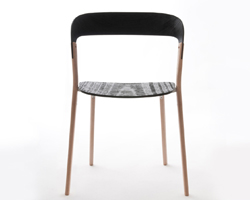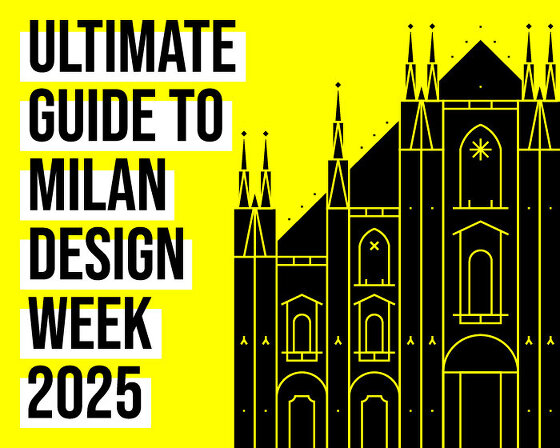stone tools digitally fitted with custom-designed handles
meditating on humanity’s oldest tools: knapped flit, shaped to cut, saw, hammer and puncture, tel aviv-based design duo ami drach and dov ganchrow felt it was time to take and rethink them in a contemporary context.
looking to the mastery of tool-making and its driving force in human advancement, drach and ganchrow’s ‘BC – AD’ project is a result of their experimental exploration of the realm of tool making. stone and flint tools have been the means of our ancestors’ survival for over a million years, magnifying our bodily (teeth, fingernails, fists etc.) capabilities of cutting / chopping, sawing and pounding.
‘as product designers, we are fascinated by the prospect of integrating thousand-year-old cutting implements manufactured by knapping (hitting one stone against the other or with the aid of a striking antler / stick) with the most contemporary cutting-edge design and manufacturing technologies. here we look again as these basic tools with our current perspective and knowledge of tool making to ask the following: what happens when these two polarities meet? how will their meeting affect the ‘natural’ existence of each entity? what new forms are generated? how does the digital age influence the making of such tools? and how does ‘craft’ get updated in the process?‘ – ami drach + dov ganchrow
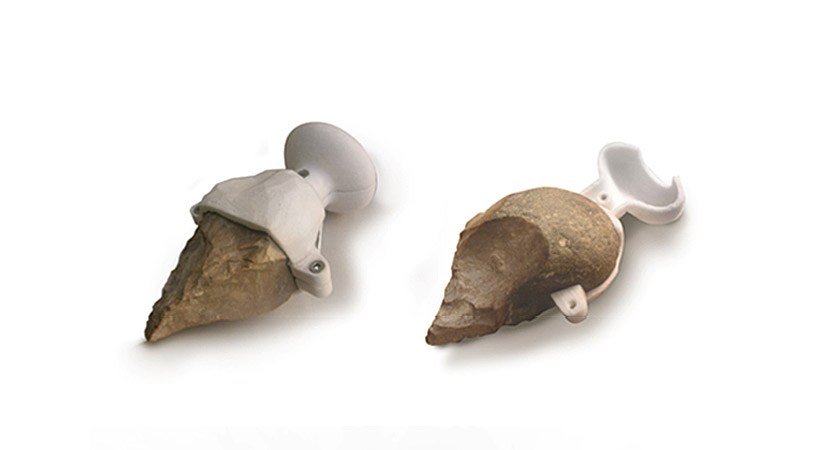 their ‘design investigation’ takes several routes: they used actual prehistoric stone tools as well as ones they knapped themselves to understand the working stages and morphology to produce a series of flint tools.
their ‘design investigation’ takes several routes: they used actual prehistoric stone tools as well as ones they knapped themselves to understand the working stages and morphology to produce a series of flint tools.
one set of stone tools were condensed into a singular object. they were scanned three-dimensionally and digitally fitted with custom design handles and produced using three-dimensional printing technology. the flint’s knapped surfaces let form to the computer-generated surfaces and at times the forms were contrastingly juxtaposed. this particular study lies in a cultural realm at the intersection of materials and technologies, functionality and time, all on a very tangible scale.
 stone tools were scanned three-dimensionally
stone tools were scanned three-dimensionally
 digital rendering of stone forms
digital rendering of stone forms
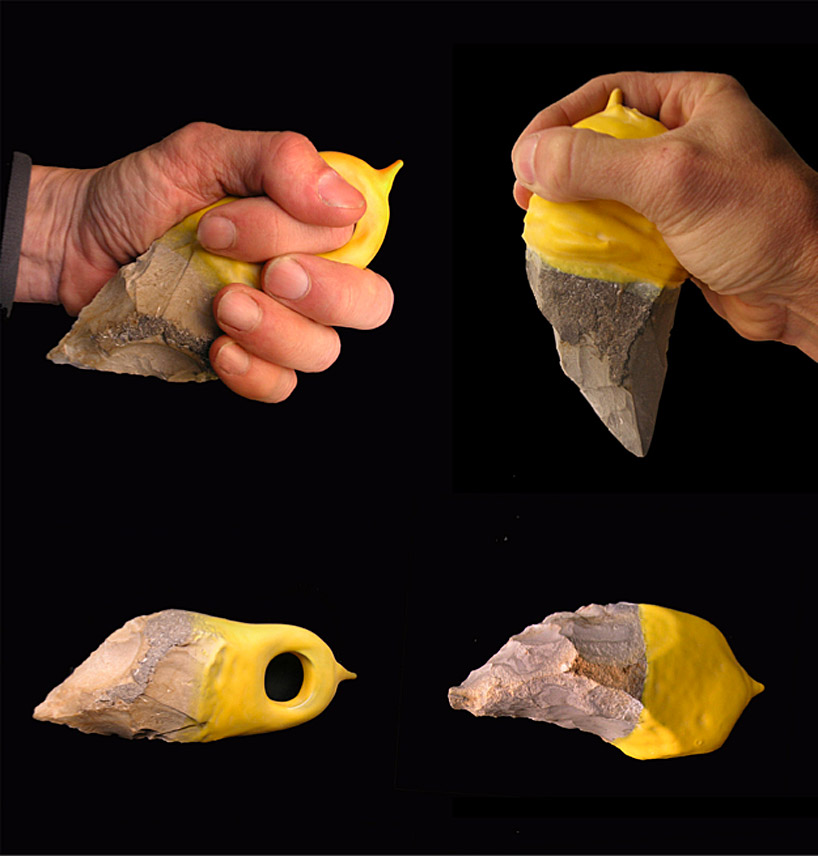 tools dipped in latex to designate the ‘hand-contact’ area
tools dipped in latex to designate the ‘hand-contact’ area
some of the stones were dipped in yellow latex as a means of designating the ‘hand-contact’ area, increasing grip friction / shock absorption as well as reflecting today’s industrially-manufactured tools’ dogmatic look (from pliers to vice-grips to power drills).

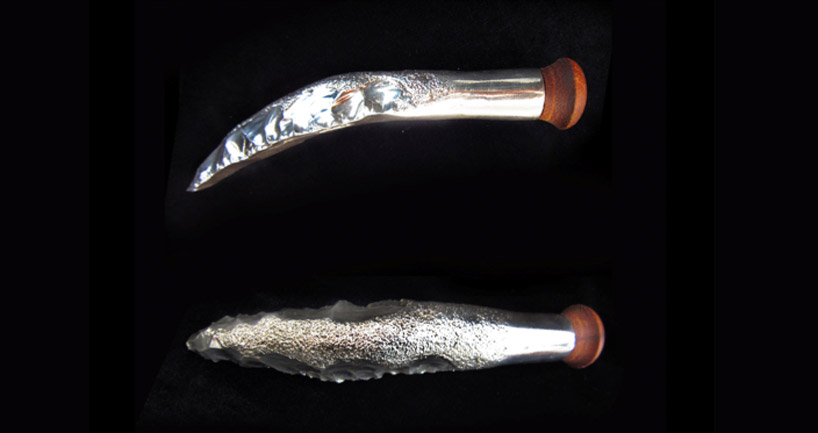
another series of stones were modified and electroplated with silver, creating a singular new object with updated features as well as a dialogue with silverware or tableware of a higher calibre.
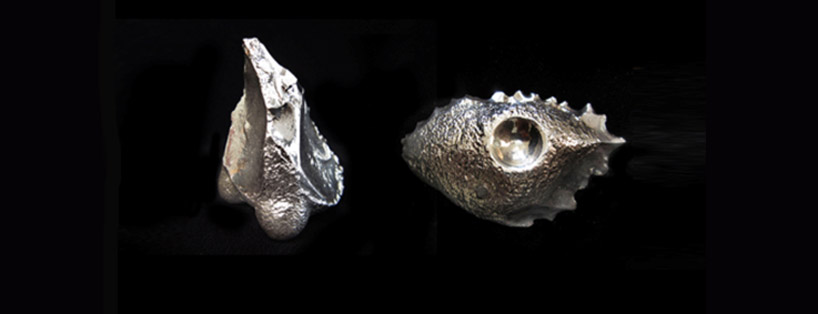

stone tool typologies developed by ami drach and dov ganchrow
the tools were exhibited as part of the promise design exhibition at ventura lambrate during milan design week 2011.


